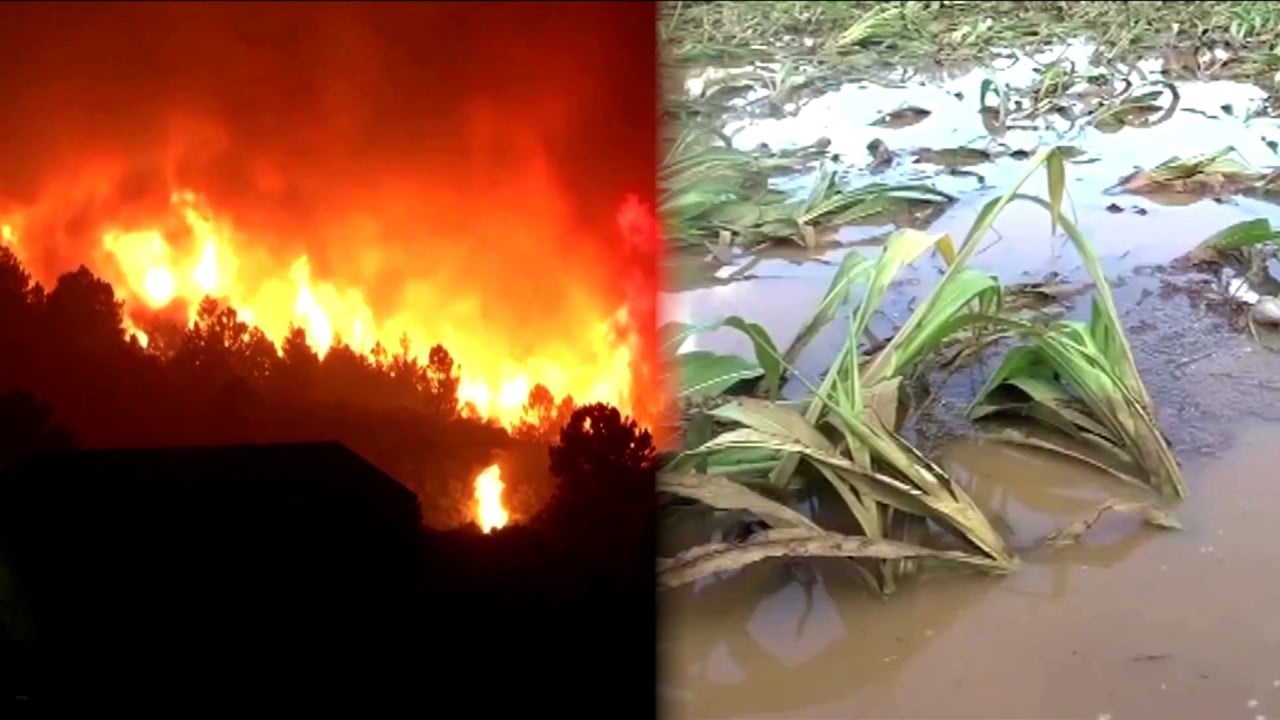
As interest in deep-sea mining rises, does the world really want to go there?
- A UN body is struggling to formulate rules to regulate the extraction of mineral deposits from deep in the ocean after a tiny Pacific country upped the ante two years ago
- While the metals extracted are useful for electric vehicle batteries, deep-sea mining threatens the marine environment
In Genesis, the first book of the Bible, God told Adam and Eve: “Be fruitful and multiply and fill the earth and subdue it, and have dominion over the fish of the sea and over the birds of the heavens and over every living thing that moves on the earth.”
I suspect he did not realise at the time the catastrophic environmental and climatic consequences of Adam, Eve and everyone that has followed them, going forth and literally fulfilling God’s broad-brush instruction.
But scientific progress means the challenges of accessing the deep sea’s riches have become technically manageable. Most important, the “clean energy” surge towards batteries and electric vehicles has led to an explosion in the need for “battery minerals” – including manganese, nickel, cobalt and copper.
One can understand their keenness. The volume and value of the mineral wealth spread across the deep-ocean floor in profound darkness 4-6km below the sea surface is prodigious. According to France’s National Centre for Scientific Research, the metals take three forms: polymetallic nodules that have grown to the size of tennis balls over millions of years and are found across thousands of square kilometres of the deep ocean floor; sulphide deposits that have developed around hydrothermal vents; and polymetallic crusts up to 10cm thick which spread from the rocky flanks of seamounts over hundreds of kilometres.
The United States Geological Survey estimates that in the Clarion-Clipperton Zone alone, which lies between Hawaii and Mexico and is the target of Nauru’s interest, there may be 21 billion tonnes of polymetallic nodules, accounting for more cobalt and nickel than all the world’s terrestrial mines combined. One estimate puts the gross value of these deep sea reserves at US$8-16 trillion.
Today they are crucial to the benthic ecosystem – which lies at the bottom of a body of water – that is largely still unknown to science. In a massive study on this ecosystem in the Clarion-Clipperton Zone, researchers have found significant “undescribed” biodiversity.

Our ignorance alone makes scientists and environmentalists jittery about disturbing the seabed, raising tonnes of sediment. They list dozens of possibly catastrophic consequences, including sediment clogging the gills of fish or suffocating coral; toxic – and potentially radioactive – minerals being released into the open ocean; and disturbance of vast reservoirs of carbon dioxide storage
The flurry over deep-sea mining has turned global attention to the International Seabed Authority (ISA), a barely-known UN institution based in Jamaica, which regulates mining in international waters.
In 2021, Nauru informed the International Seabed Authority that it intended to begin mining the seabed in partnership with Vancouver-based The Mining Company. Under ISA rules, this set a clock ticking: if the authority was unable to finalise regulations for the industry, it would have to consider mining applications under existing regulations.

The deadline fell at last month’s annual ISA meeting, with the authority clearly unprepared to deliver agreed rules for mining operation. Our profound ignorance of the potential global ecosystem harm arising from deep-sea mining made it impossible to agree on environmental ground rules concerning activity in what ISA secretary general Michael Lodge has described as “the largest habitat for life on Earth, and by far the most difficult to access”.
Equally important, under the UN Convention on the Law of the Sea, most of the seabed is “a common heritage of mankind” and the proceeds of deep seabed mining should be used to benefit mankind. This stipulation, obviously of keen concern to potential deep-sea miners, remains an unresolved point of contention. Some ISA members argue miners should pay a royalty of 45 per cent. Miners themselves are talking in the ballpark of 1-2 per cent.
Can deep-sea fishing feed China, or will the haul be too costly?
Officials left the ISA meeting with an uneasy truce. They agreed to formulate rules by 2025. While 31 exploration licences have been granted so far, commercial mining has not been permitted. Several countries have sought a “precautionary pause” on the practice. Others have called for an indefinite moratorium. France has stood out in calling for an absolute ban.
There seems little confidence that the ISA can by next summer reach agreement on rules, but the rising mountain of concerns over possible environmental harm may be more important in stymieing aspiring deep-sea miners.
A report by non-profit think tank Planet Tracker noted that “deep sea ecosystem restoration post-mining is an illusion”. As Francois Moisnier, head of the oceans programme at Planet Tracker, comments: “There are many false solutions to the climate crisis, but deep sea mining is one that can still be stopped.”
David Dodwell is CEO of the trade policy and international relations consultancy Strategic Access, focused on developments and challenges facing the Asia-Pacific over the past four decades


